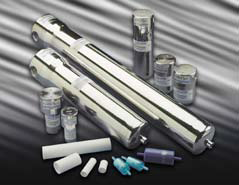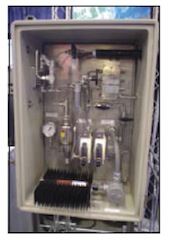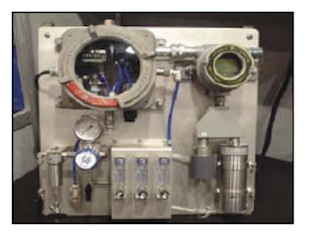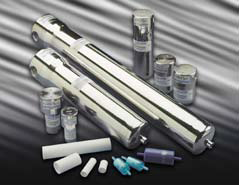
There are many requirements throughout refineries, petroleum and chemical facilities where sample analysis is critical to the operation and production output. Sample analysis instrumentation are adversely effected by condensed contaminants, gas bubbles and solid contaminants both of which can also skew the analysis output. Efficient removal of undesirable contaminants from a sample stream will ensure accurate analysis and trouble-free operation of the instrumentation.


Parker Balston Sample Conditioning on Filtration Systems
Typical applications for sample filtration include stack gas or emissions sampling, on-line process analyzers, effluent stream sampling, natural gas analysis and ambient air analysis. These sampling applications all have specific and unique filtration requirements depending on the analysis to be performed. Quantitative measurement of solids (capture and retention of solids) is unique to stack and exhaust gas sampling.
Slipstream or bypass sampling (high flow, short lag time) is used extensively for product quality analysis. Coalescing filtration is used widely in most sampling applications to protect analyzers from condensables. Requirements for sample filters range so widely that specifying a filter is best done on a case by case basis. There is one generalization that applies to all sample filter requirements: the filter must be able to efficiently separate a noncontinuous phase contaminant from the continuous sample stream phase.
In addition to removing solid particles, the filter specifically must be able to remove liquid droplets in gas samples and to remove immiscible liquid droplets and gas bubbles in liquid samples. Most filter media will do an adequate job of removing solid particles from liquids or gases, but the only practical commercial media that will separate liquids from gases, gas bubbles from liquids and two immiscible liquids is glass microfiber media with a coalescing matrix design.
Case Study
Process analytical instrumentation such as gas chromatographs, liquid chromatographs, atomic adsorption instruments, fourier transform infrared spectrometers, ion analyzers and chemical composition analyzers are routinely found throughout most production areas of a facility. Although miniaturization and enhanced ruggedness is designed into these instruments, analytical precision, accuracy and consistency remain the primary concern. A key facto that causes difficulty in obtaining increasingly precise qualitative and quantitative data from online process analyzers is in proper sample conditioning. Parker Balston offers filtration systems that are specifically designed for sample conditioning. There are over 100 filter housings and filter media specifically designed to handle most all sampling requirements. Capabilities include pressure ranges up to 5000 psig with temperature ranges from -300°F to 900°F. Filtration efficiencies range from 0.22 micron to 100 microns in liquid streams and 0.01 to 100 microns in gaseous streams. Hardware is offered in a wide array of materials from anodized aluminum to PTFE, stainless steel and monel.
Recognized as the industry leader in sample filtration and conditioning, Parker Balston sample filtration systems are found in the majority of all instrument and analyzer sheds and as a supplied component with most process instrumentation packages.
Features and Benefits
- Remove liquids and solids from gas samples
- Remove solids and gas bubbles from liquid samples
- Coalesce and separate two liquid phases
- Filter solids and liquids from gases with 99.999% efficiency at 0.01 micron
- Temperature resistance to 900°F (482°C)
- Low pressure drop
- Long life between filter element changes
Models 91S6, 95A, 95M 95S6, 95T, 105S6
 These models are miniature T-type filters constructed of 316 stainless steel (5000 psig), PTFE (150 psig), and other specialty materials. With only 19 ml internal volume and the opportunity for by-pass or slipstream filtration using the drain port as an exit port, the model 95 filters are ideal sample filters for on-line analyzers. The model 105S6 has a small internal volume of 15 ml, which is ideal for applications requiring fast sampling response time.
These models are miniature T-type filters constructed of 316 stainless steel (5000 psig), PTFE (150 psig), and other specialty materials. With only 19 ml internal volume and the opportunity for by-pass or slipstream filtration using the drain port as an exit port, the model 95 filters are ideal sample filters for on-line analyzers. The model 105S6 has a small internal volume of 15 ml, which is ideal for applications requiring fast sampling response time.
